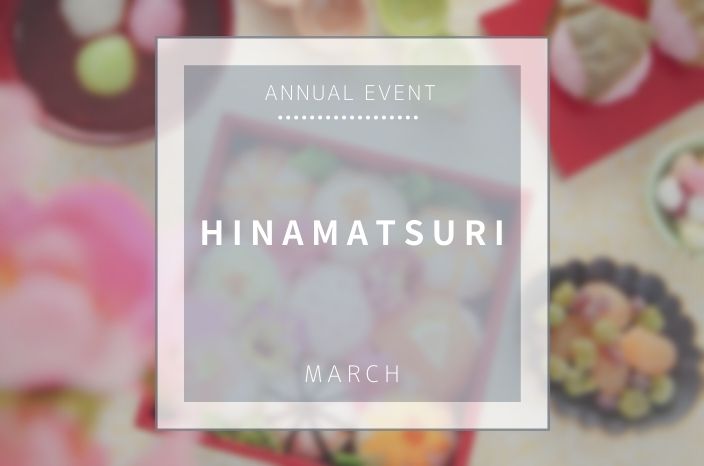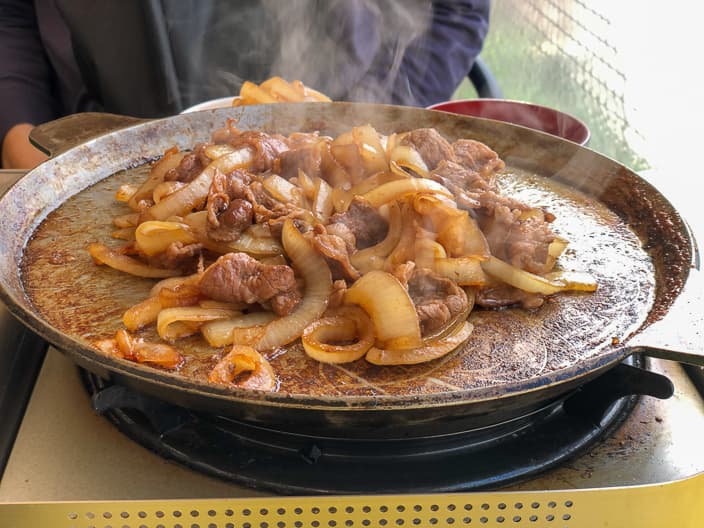Today, I would like to introduce the cultural event of March, the Hinamatsuri, taking place on March 3rd.
Hinamatsuri, a day of celebration for girls and a yearly occasion to pray for the healthy growth and happiness of girls. We display Hina dolls in the house and decorate with Hishimochi (Diamond rice-cake), Hina-arare (rice balls snack), cherry and peach flowers, and enjoy Chirashi-sushi and clam dishes.
The History and Origin of Hinamatsuri
Hinamatsuri is also called “Momo no Sekku” (peach festival) as it takes its origin in “Joshi”, one of the “Gosekku” (Five Seasonal Festivals), which originally came from China.
Since ancient times, “Setsu”, which represents the change of seasons, has been said to be a time susceptible to evil spirits. Therefore, in China, there was a custom to purify oneself in the river on the day of “Joshi”. And in Japan, people began stroking themselves with dolls made of paper, etc., to transfer their impurities and throw them into the river.
This event is said to be the root of “Nagashi-bina”, a custom that still remains today. However, people tend not to follow the nagashi-bina custom these days to avoid polluting the sea. Therefore, if you do follow the custom, it can be quite controversial, and spectators may find and bring the dolls back to the temple to burn them.
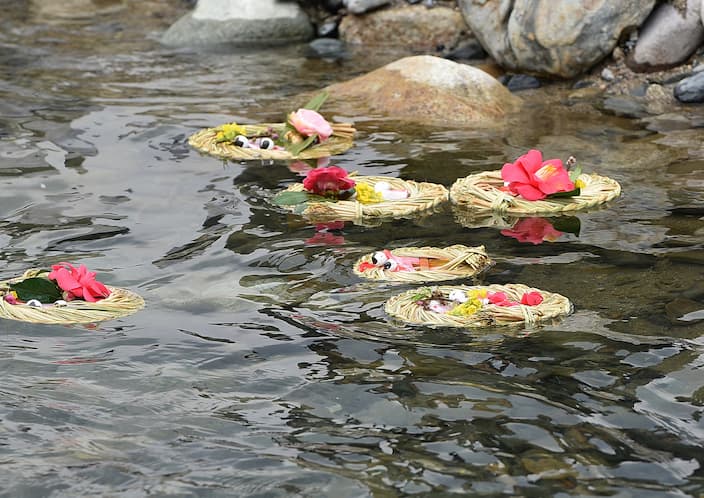
Image Source:Nagashibinanoyakata
Hina Dolls
Since the Heian period, “Hina-Asobi” (playing with dolls) was a popular pastime for aristocratic children, similar to the way we play with dolls today. During the Edo period (1603-1868), thanks to the improvement of production techniques, it also spread among Samurai families and wealthy townspeople. This is how the custom of decorating Hina dolls as we know it today, was born.
It is said that Hina dolls are usually given as gifts by maternal grandparents, and my parents followed suit, giving them to my family. This is because hina ornaments were considered to be one of the tools for brides to be, but nowadays, it doesn’t seem to matter so much who buys them. In some cases, the grandparents of both families split the purchase, and in other cases, the parents of the child themselves buy the dolls. There are also many families that do not prepare Hina dolls at all.
At my parents’ house, we used to have a 7-tiered altar decorated with dolls, but nowadays, with the trend toward nuclear families, many houses don’t have the space for large doll displays at home, so many people choose only one tier, with Odairisama (boy) and Ohinasama (girl).
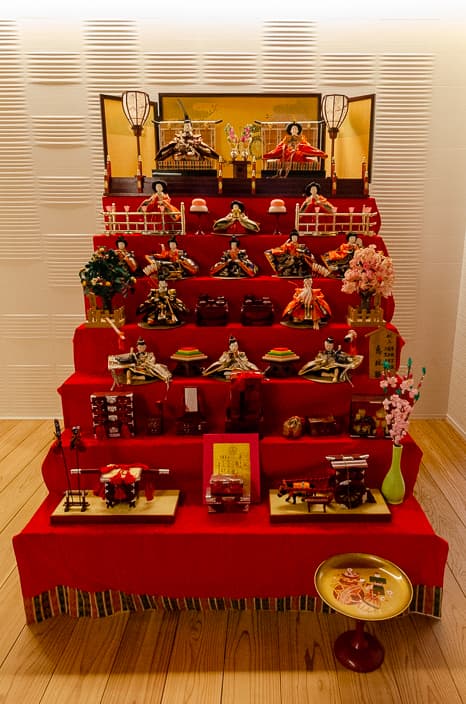
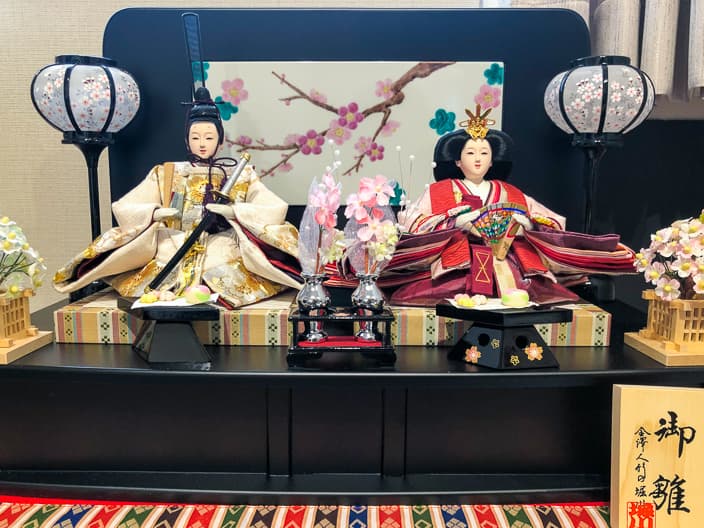
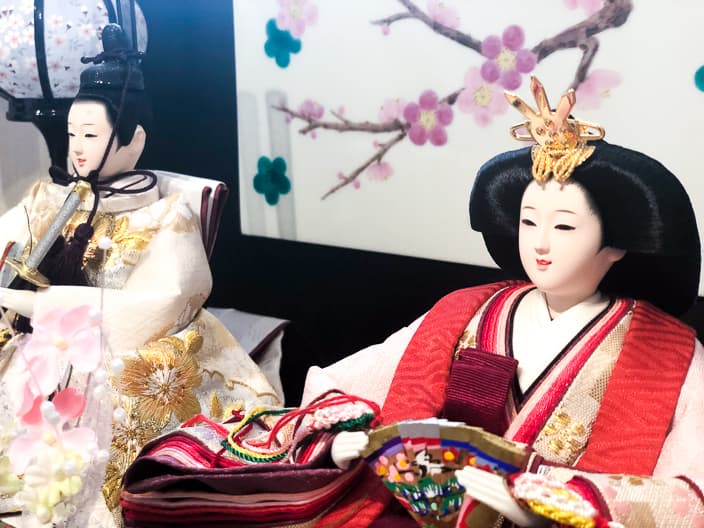
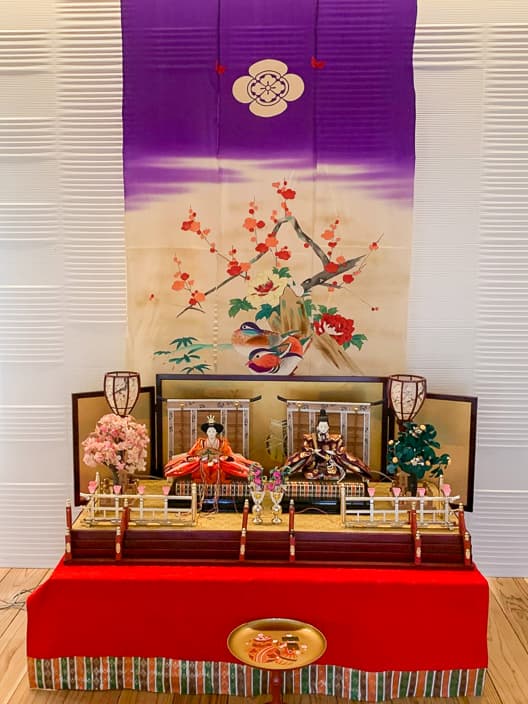
At this time of year, there are also many places that hold Hinamatsuri events and display dolls.
These are the Tsurushibina dolls on display at the Hotel Gajoen Tokyo in Meguro, Tokyo.
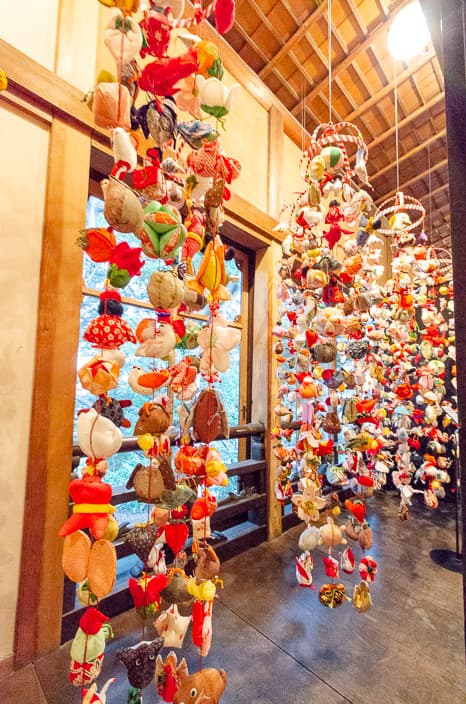
It is said that Tsurushibina originated in the Edo period (1603-1868) when parents celebrated the first Hinamatsuri by making handmade Hina decorations for their beloved children and grandchildren. The hanging items are said to be the necessities of a girl’s life.
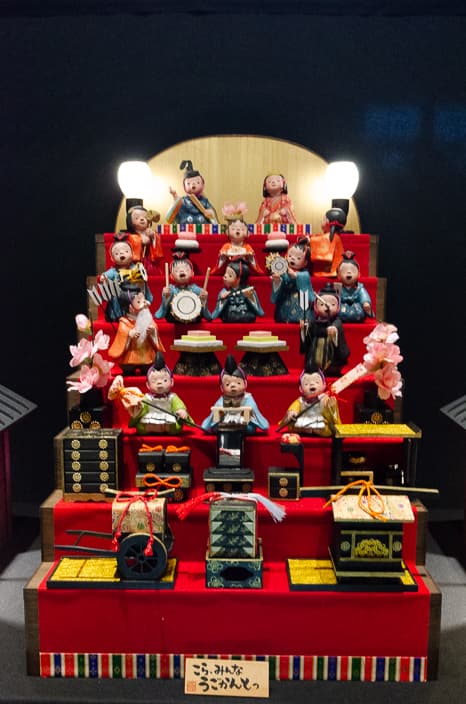
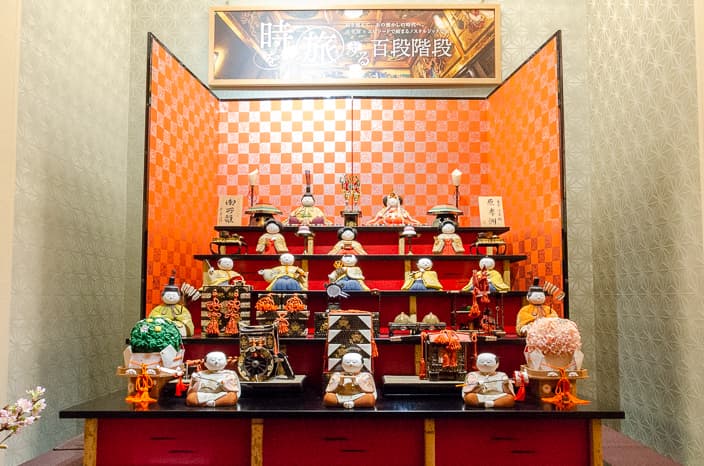
The Kashima Central Hotel in Ibaraki Prefecture displays about 1,600 Hina dolls inside the building. I haven’t seen the actual dolls myself, but an acquaintance of mine sent me this photo and it’s quite impressive!
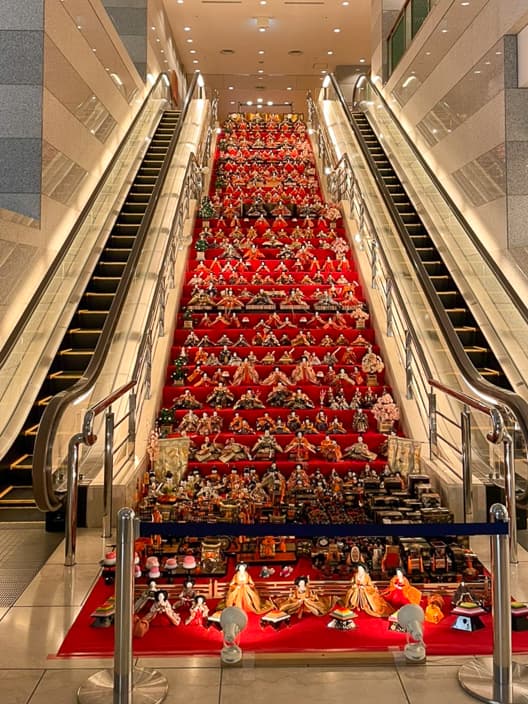
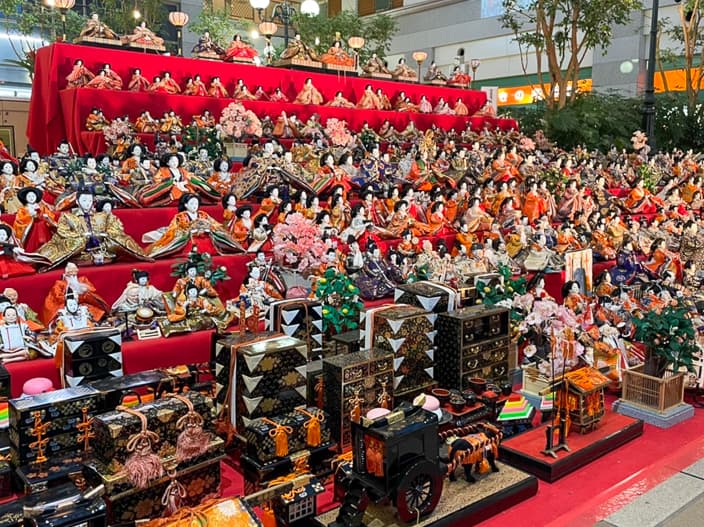
Dishes & Sweets for the festival
Chirashi-zushi (sushi)
Originally, for the Girls’ Festival,people ate “Nare-zushi” (sushi), which is a dish of fish stuffed with rice, with a unique taste and smell, but it has transformed over time into the gorgeous “Chirashi-zushi, made of vinegared rice topped with various ingredients, such as seafood, seaweed and omlet.
I made a simple chirashi-zushi at home last year. If you put sashimi or steamed shrimp on top, it would look more stunning, but we kept it simple with just egg, vegetables and ikura (trout roe).
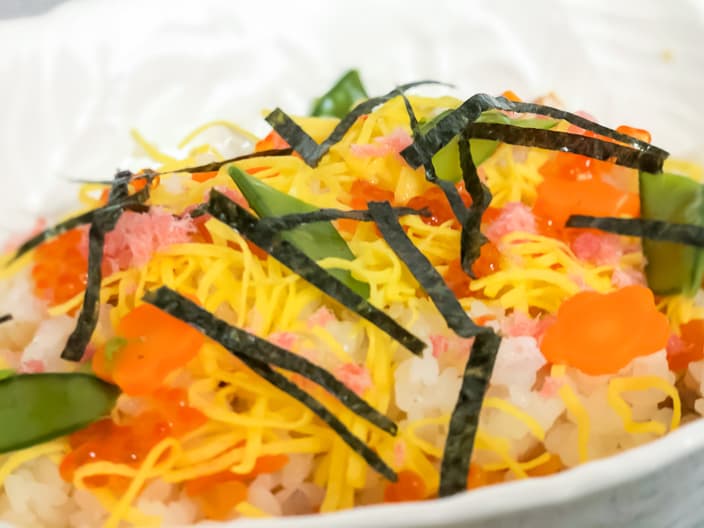
My 2-year-old daughter doesn’t like to eat chirashi-zushi, so we have converted it to a Temarizushi-style rice ball.
Isn’t the paper cup Ohinasama that she made at nursery school cute?
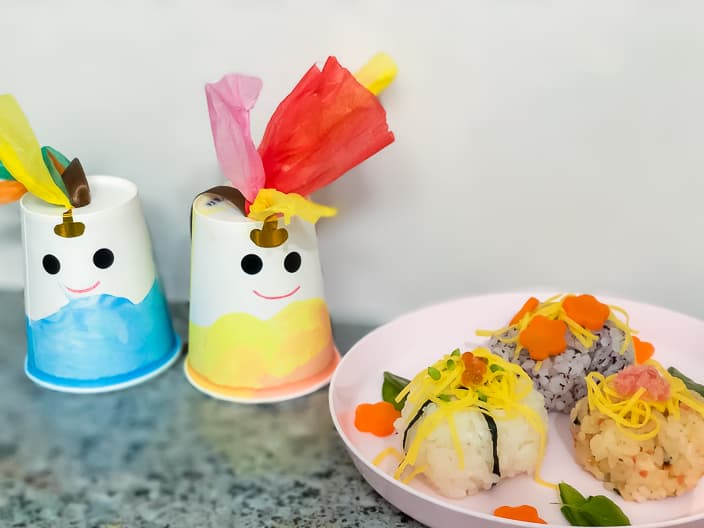
Hina-arare
Hina-arare is a rice snack that is often sold at supermarkets and convenience stores during the Doll Festival. There is a difference between the Kanto and Kansai regions. The Kanto version is made from Uruchi rice and is sweet, while the Kansai version is made from glutinous rice and contains soy sauce and shrimp. It may sound strange, but I like mayonnaise-flavored hina-arare !
Hishimochi
Hishi-mochi, which are diamond-shaped pounded rice cakes stacked on top of each other, are dyed in pretty colors: pink, white, and green. The pink color represents peach, the white color represents purity, and the green color is made of mugwort, which is believed to purge evil spirits.
Clamshell (Hamaguri) soup
This is a dish that also serves as a good luck charm, to wish for a happy married life for a girl: the clams whose shells are perfectly aligned on both sides (like husband and wife), supposed to bring marital harmony.
If you are coming to Japan during this time of year, please be sure to find unique items and try dishes related to the Doll’s Festival!

